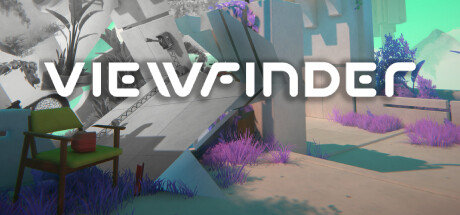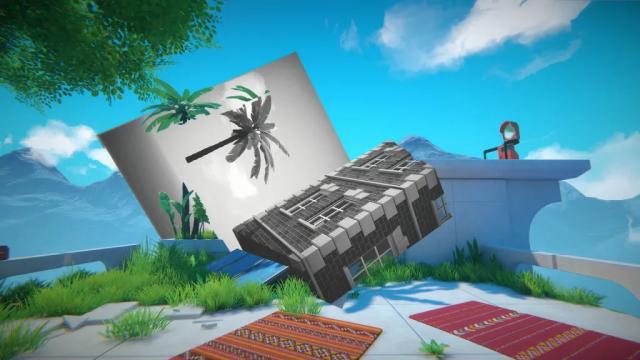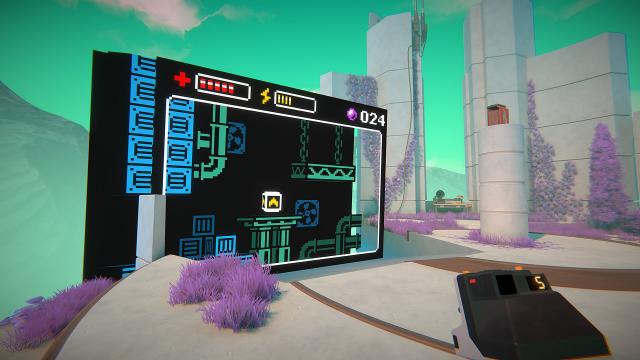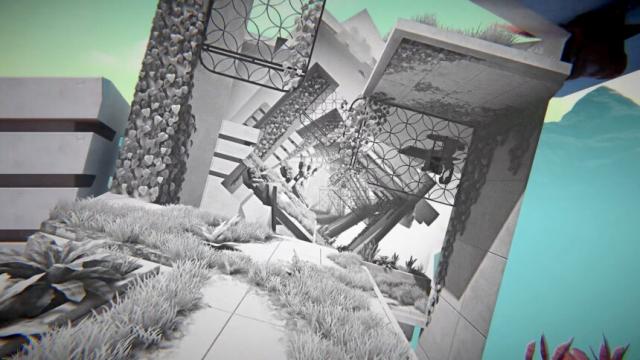Existing User Log In
New User Registration
Register for a free account to gain full access to the VGChartz Network and join our thriving community.





America - Front


America - Back

Sad Owl Studios
Adventure
 (Add Date)
(Add Date) (Add Date)
(Add Date) (Add Date)
(Add Date)
| Owners: | 0 |
| Favorite: | 0 |
| Tracked: | 0 |
| Wishlist: | 0 |
| Now Playing: | 0 |
Reviewer's Note: While not integral to appreciating the overall game, I will bring up some early-game SPOILERS for certain critiques. Read on at your own discretion.
Social media's default state is a cesspool, but it's not bereft of genuine inspiration. A shining example of this can be found from then-game design student Matt Stark utilizing photography to alter a game world in mind-blowing ways. Fast forward a few years later, Sad Owl Studios (co-founded by Stark) has finally finished crafting a full game inspired by said concept. In this dawn of relatively new hardware with all sorts of promises, it's great to see another humble-origins story effectively outshine blockbuster featurettes through ingenuity alone. From refreshing gimmick to development background, Viewfinder shares a similar lineage with Portal – which can only be a good thing.
That comparison is apropos to their similar story structure too. Although not guided by a secretly-maniacal AI, this mute protagonist will occasionally hear casual quips and instructions from a disembodied voice, Jessie, whilst going from room to room. The reason for that is another Portal parallel: there’s a wider world outside of the VR/AR simulation. Rather than keeping this closer to the chest, this early reveal is done to discuss the protagonist and Jessie's core motivation: unearthing any potential discoveries several gifted researchers may have made in combatting climate change.
After the prologue, the game continues in a researcher's personal space – a sort of mini-hub – and a few CRT teleporters containing a set number of levels. The first Polaroid camera you stumble across is locked to a tripod taking aim at nothing particularly special. But it's the power within the shot that matters: you can transplant what's captured in that flat 2D plane and materialize it in 3D. So a picture of a sidewalk can be framed and angled to create an artificial bridge between two gaps.
This new-fangled power can create and destroy. There isn't any UI element to notify if/when you've snapped the right picture and adjusted it to the correct angle; instead, your freeform picture-magic replaces anything in the way, inadvertently slicing away the original geometry. It's a technical marvel to witness the edges of a stretched, black-and-white rectangle cleanly slice through anything – eventually hitting the simulation wall and blowing up the greyscale photo a hundred fold. One misstep can result in vaporizing mission critical items, or even the teleporter exit itself. Fortunately, that's ameliorated by a generous VHS-styled rewind ability (a la Braid), reinforcing its laidback approach to creative exploration.
With considerations for both addition and destruction, the complexity and rulesets gradually build up over time. You'll scan the arena, notice the next teleporter is screwed into a nearby ceiling, and take a picture to spin it 180 degrees so you can step onto it. Therein lies a large part of Viewfinder's genius: what's captured in the Polaroid are not mere facades or "dead" things, but rather a state of time. For example, imagine trying to get a battery that's perched high above. You can only see the top-half from below and there's no way to get a higher vantage point. In your mind, the photo will only generate a sliced battery; in reality, the battery remains fully intact. Why? Because these magical cameras are essentially vacuuming all digital information captured through that lens within said 3D space and compressing it into a flat panel. It's both a delight and brain-breaking exercise to expatiate how Viewfinder could incidentally be considered a 4D puzzler.
Daunting though it may seem, Sad Owl succeeds at drip-feeding different nuances to understand this potential. One moment you're navigating through various color-coded worlds to get past certain barriers, the next you're properly aligning yourself in front of picture fragments to create a 'new' bridge. The ways it heuristically challenges your spatial reasoning combined with time-sensitive events, perspective-warping hurdles, and more might force you to mentally shut down at a few points. A couple of retreads are spread across main and optional challenge rooms – dawdling the line between filler or integral reinforcement, but even then it's hard to blame anyone when their fundamentals are sound.
Beyond the solid pacing, its fastidious attention to detail deserves high praise as well. Sure, the sterile hubs and puzzle rooms aren't the best lookers, nor the most complex; that said, the cleanliness helps players absorb important visual cues while signifying the difference between the 'real' world and what's captured on each grey-scaled photo. It's also crucial to understand both the distance at which you took the picture and where you're setting it within the world. Even if you're not the most patient or particular photographer, there's enough give in its design to compensate with creative first-person platforming – which does have some pitfalls too. Past that, there’s an invisible-yet-tangible allure in replacing huge chunks of each puzzle room with your own creations, tilting them at odd angles, and other freeform distractions.
The one gameplay critique I'd anticipate many will echo is value, but that'd miss the point. For starters, the dollar-per-hour ratio of $25 for 5+ hours on a non-completionist run (still some optional puzzles to iron out) is modest enough already. No, I think what said complaints mean to highlight is which ideas missed proper time in the dark room. Materializing something by standing in the right spot is a safe retread, whilst the neat "multi-dimensional portals" gimmick could’ve been further developed. If it was as simple as hankering for more puzzles and a longer runtime, then Portal would be less of the phenom it is today.
Invoking Valve's beloved puzzle series (again) is enough to highlight the biggest pebble in its boot: the storytelling/writing. It's funny how the stars practically aligned for its July release month to coincide with recent global heat reports, but communicating that motif needed something more thorough and less… Marvel-esque in its execution. No offense to Savy Des-Etages as a voice actor, but I wanted to immediately mute Jessie and remove subtitles after hearing her gab in millennial syntax. Granted, her presence is significantly reduced after the first act (for valid story reasons), but no other supporting character or presentational element truly reaches tremendous highs. The various high-IQ researchers' whiteboards and audio logs provide a compendium of insights about their work and personal lives, but continually feel like insipid text-dumps; in fact, it's rather telling that the one personable character is a holographic cat with a British accent. It's an odd duck because there is connective tissue within this structure, and at least it's not a mopey climate-sadgasm like After Us, but nothing lands with real oomph.
All told, Sad Owl Studios is doing something right if its debut title's closest comparison is the Portal series; even if not measuring up across each individual aspect, it's an exceptional achievement regardless. While choice presentational and story decisions slightly blur the final image, it's impressive how much ingenuity and mind-twisting logic could be squeezed out of what started as a design student's neat discovery. Even discounting the lens of Viewfinder's origin story, it's nevertheless an impressively-designed puzzler that'll leave an indelible mark on anyone's cerebral photo album.
Contractor by trade and writer by hobby, Lee's obnoxious criticisms have found a way to be featured across several gaming sites: N4G, VGChartz, Gaming Nexus, DarkStation, and TechRaptor! He started gaming in the mid-90s and has had the privilege in playing many games across a plethora of platforms. Reader warning: each click given to his articles only helps to inflate his Texas-sized ego. Proceed with caution.









